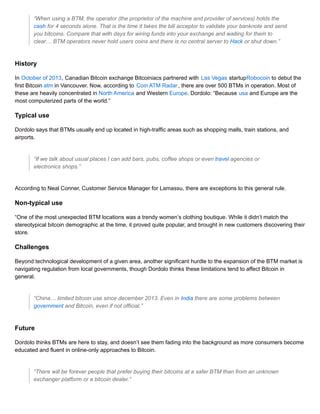Validating Bitcoin Transaction in Bitcoin Core: A Step-by-Step Guide
Congratulations on installing Bitcoin Core, the official reference implementation of the Bitcoin protocol! As you’re running a full node, you’re now one step closer to understanding how Bitcoin works. One crucial aspect of Bitcoin is transaction validation, which ensures that each block contains valid transactions and doesn’t contain double-spending or other malicious activities.
In this article, we’ll walk you through the process of validating a Bitcoin transaction using Bitcoin Core.
What does it mean to validate a transaction?
When you send a transaction, your node needs to verify whether it’s valid. This involves checking several conditions:
- Transaction validity: Does the transaction contain all required fields (e.g., sender, recipient, amount)?
- Transaction sequence: Is the transaction in the correct order?
- Amount and denominations: Are the amounts and denominations correct?
Step-by-Step Guide to Validating a Bitcoin Transaction
- Connect to your node: Use
bitcoin-clior a GUI client like Electrum to connect to your full node.
- List all blocks: Execute the command
getbalance(), which returns a list of unconfirmed blocks. This will give you an idea of what transactions are pending.
- Find the transaction you want to validate: Use
gettransaction()with the transaction ID (txid) or hash of the transaction. You can find this by listing all blocks and searching for the txid or hash.
- **Use
getrawtransaction(): This function returns the raw transaction data, which is a JSON file containing all transactions in the block. To access the transaction data, you’ll need to usegetblocktemplate()to create a block template, then usegetrawtransaction()with that template.
- Check transaction validity: You can validate each transaction individually by checking its fields using tools like
bcpairs(). This command lists all pairs of values in the transaction.
- Verify sequence order (optional)

: If you’re concerned about transaction sequences, you can use
gettransaction()with a specific txid or hash and then check if it’s in the correct sequence usinggetrawtransaction().
Example Use Case
Let’s say you want to validate a transaction that sent $100 from your coldcard wallet (Coldcard Wallet) to another user’s address (User A).
- Connect to node: Run
bitcoin-cli getbalance().
- Find the transaction: Search for the txid of the transaction or use
gettransaction()with a specific hash.
- Use
bcpairs()to validate individual transactions:
bitcoin-cli bcpairs -txn | grep 'value'
This will show you all pairs of values in the transaction.
- Verify sequence order (optional):
* Use gettransaction() with a specific txid or hash.
* Check if it’s in the correct sequence using getrawtransaction(). For example:
bitcoin-cli getblocktemplate | bcpairs -txn | grep 'seq'
Tips and Variations
- Use
bclcommand-line tool to validate transactions. It provides a more structured way of checking transaction validity.
- If you’re using Electrum, you can use its built-in transaction validation tools to simplify the process.
By following these steps and tips, you’ll be able to validate Bitcoin transactions using Bitcoin Core. Remember that this is just one aspect of Bitcoin’s security features; it’s essential to keep your node up-to-date with the latest protocol updates to stay safe.

